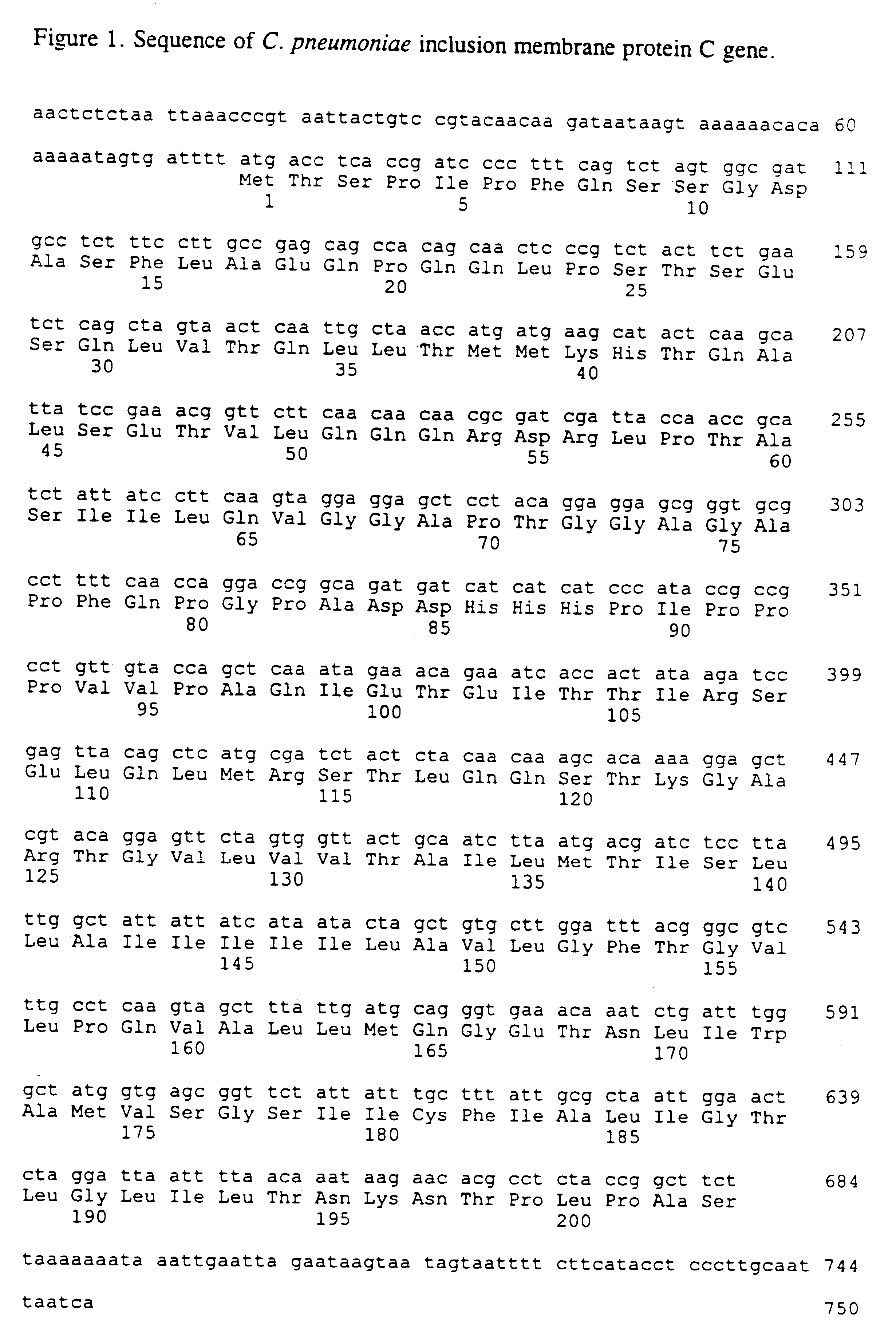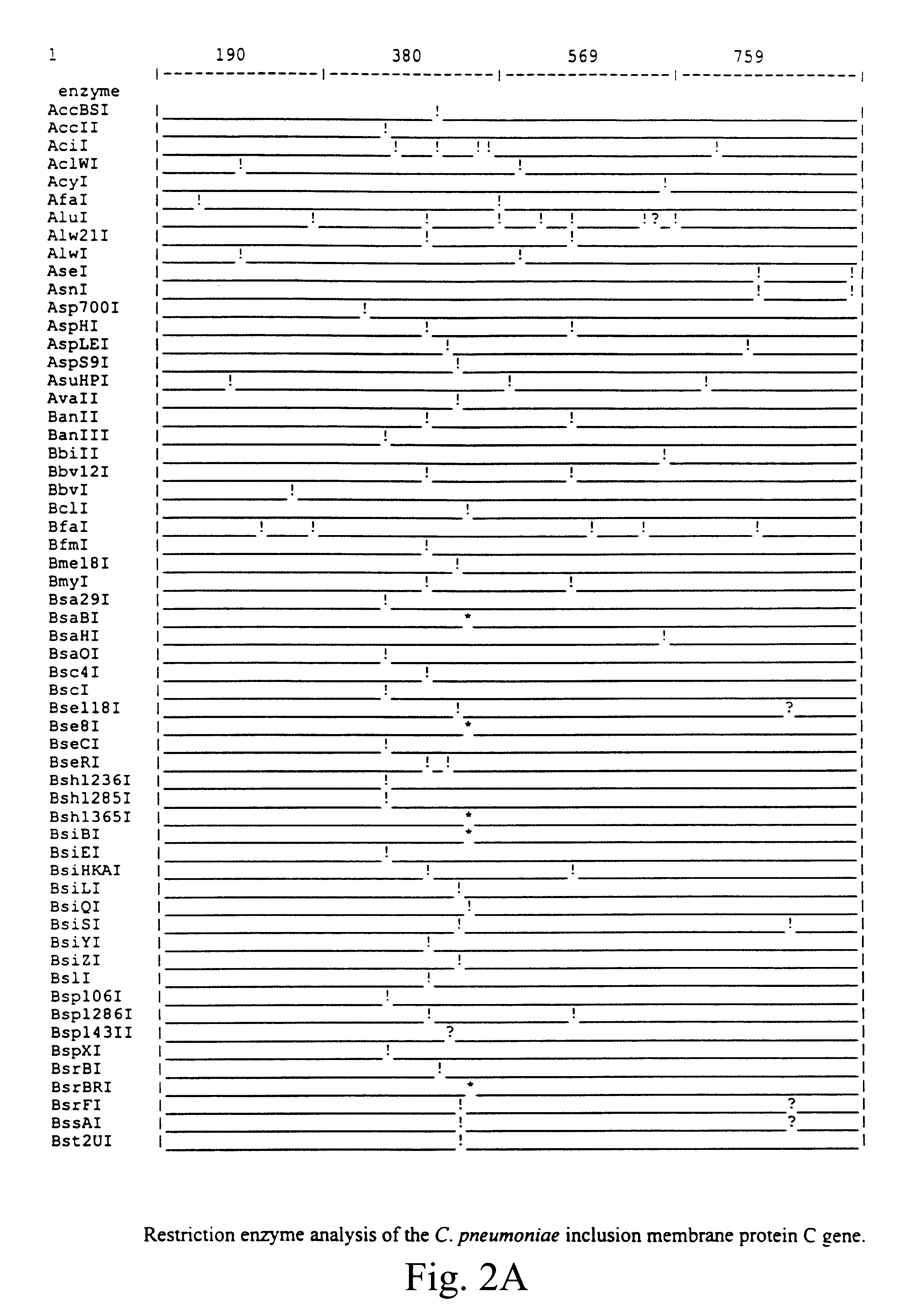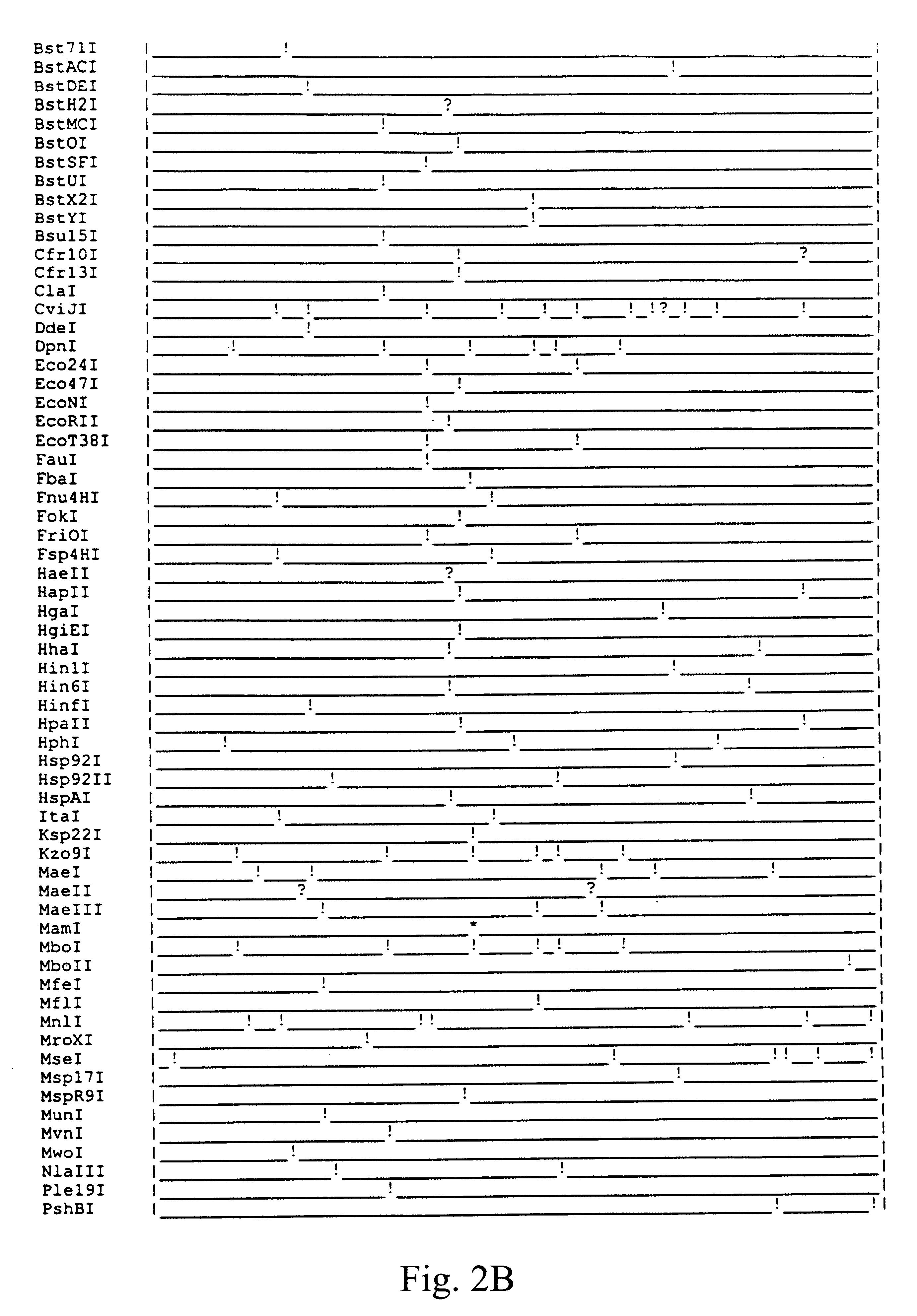Nucleic acid molecules encoding inclusion membrane protein C of Chlamydia
a technology of inclusion membrane and chlamydia, which is applied in the field of nucleic acid molecules encoding inclusion membrane protein c of chlamydia, can solve the problems of not yet identifying antigens, not yet identifying human chlamydia serotypes, and not yet identifying effective vaccines for human chlamydia infection, so as to facilitate the design of treatment/immunization schedules
- Summary
- Abstract
- Description
- Claims
- Application Information
AI Technical Summary
Benefits of technology
Problems solved by technology
Method used
Image
Examples
example 1
This Example illustrates the preparation of a plasmid vector pCAI115 containing the inclusion membrane protein C gene.
The inclusion membrane protein C gene was amplified from Chlamydia pneumoniae strain CMI genomic DNA by polymerase chain reaction (PCR) using a 5' primer (5' ATAAGAATGCGGCCGCCACCATGACCTCACCGATCCCCTTTCAG 3') (SEQ ID No: 4) and a 3' primer (5'GCGCCGGATCCGAGAAGCCGGTAGAGGCGTG 3') (SEQ ID No: 5). The 5' primer contains a Not I restriction site, a ribosome binding site, an initiation codon and a sequence at the 5' end of the inclusion membrane protein C coding sequence (SEQ ID No: 2). The 3' primer includes the sequence encoding the C-terminal sequence of the inclusion membrane protein C and a Bam HI restriction site. The stop codon was excluded and an additional nucleotide was inserted to obtain an in-frame fusion with the Histidine tag.
After amplification of the genomic DNA, the PCR fragment was purified using QIAquick.TM. PCR purification kit (Qiagen) and then digested ...
example 2
This Example illustrates the preparation of the eukaryotic expression vector pCAI115.
Plasmid pcDNA3.1(-)Myc-His C (Invitrogen) was restricted with Spe I and Bam HI to remove the CMV promoter and the remaining vector fragment was isolated. The CMV promoter and intron A from plasmid VR-1012 (Vical) was isolated on a Spe I / Bam HI fragment. The fragments were ligated together to produce plasmid pCA / Myc-His. The Not I / Bam HI restricted PCR fragment containing the inclusion membrane protein C gene from Example 1 was ligated into the Not I and Bam HI restricted plasmid pCA / Myc-His to produce plasmid pCAI115 (FIG. 3).
The resulting plasmid, pCAI115, was transfered by electroporation into E. coli XL-1 blue (Stratagene) which was grown in LB broth containing 50 .mu.g / ml of carbenicillin. The plasmid was isolated by Endo Free Plasmid Giga Kit.TM. (Qiagen) large scale DNA purification system. DNA concentration was determined by absorbance at 260 nm and the plasmid was verified after gel electrop...
example 3
This Example illustrates the immunization of mice to achieve protection against an intranasal challenge by C. pneumoniae.
It has been previously demonstrated (ref. 76) that mice are susceptible to intranasal infection with different isolates of C. pneumoniae. Strain AR-39 (ref. 77) was used in Balb / c mice as a challenge infection model to examine the capacity of chlamydia gene products delivered as naked DNA to elicit a protective response against a sublethal C. pneumoniae lung infection. Protective immunity is defined as an accelerated clearance of pulmonary infection.
Groups of 7 to 9 week old male Balb / c mice (8 to 10 per group) were immunized intramuscularly (i.m.) plus intranasally (i.n.) with plasmid DNA containing the coding sequence of C. pneumoniae inclusion membrane protein C, prepared as described in Examples 1 and 2. Saline was given to groups of control animals.
For i.m. immunization alternate left and right quadriceps were injected with 100 .mu.g of DNA in 50l of PBS on t...
PUM
| Property | Measurement | Unit |
|---|---|---|
| Fraction | aaaaa | aaaaa |
| Fraction | aaaaa | aaaaa |
Abstract
Description
Claims
Application Information
 Login to View More
Login to View More - R&D
- Intellectual Property
- Life Sciences
- Materials
- Tech Scout
- Unparalleled Data Quality
- Higher Quality Content
- 60% Fewer Hallucinations
Browse by: Latest US Patents, China's latest patents, Technical Efficacy Thesaurus, Application Domain, Technology Topic, Popular Technical Reports.
© 2025 PatSnap. All rights reserved.Legal|Privacy policy|Modern Slavery Act Transparency Statement|Sitemap|About US| Contact US: help@patsnap.com



